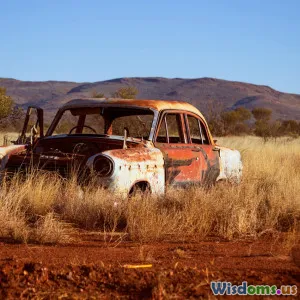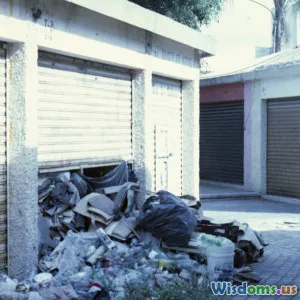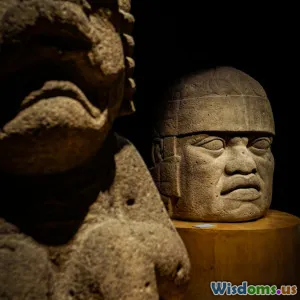
Top Challenges Facing Archaeologists in Remote Desert Digs
8 min read Explore the harsh realities archaeologists face in remote desert digs, from extreme environments to logistical hurdles. (0 Reviews)
Top Challenges Facing Archaeologists in Remote Desert Digs
Introduction
The desert, with its vast stretches of arid landscapes and harsh, relentless sun, has long been both a cradle and a tomb of ancient civilizations. While this environment offers a tantalizing window into human history, it simultaneously poses formidable obstacles for archaeologists striving to unlock its secrets. Remote desert digs test the limits of endurance, innovation, and perseverance. What does it really take to conduct archaeological research miles from civilization under brutal conditions? In this article, we delve into the top challenges that archaeologists face in some of the world's most unforgiving desert fields.
The Extreme Environmental Conditions
Deserts are among the most inhospitable places on Earth. The environmental extremes include searing daytime temperatures often climbing above 50°C (122°F), drastic nighttime cooling, and sandstorms that can whip up suddenly and obscure visibility.
According to the Smithsonian Environmental Research Center, prolonged exposure to extreme heat puts field teams at risk of heat exhaustion and dehydration. In the Sahara Desert, for example, archaeologist Dr. Sofia Rojas noted, "Working under the desert sun is not just physically taxing—it forces us to carefully plan each excavation hour to avoid dangerous midday heat."
Moreover, sandstorms present more than discomfort—they can damage fragile excavation sites by burying uncovered artifacts or eroding exposed layers. Those conditions require archaeologists to develop rapid excavation techniques or protective coverings to safeguard their findings.
Access and Logistics in Remote Locations
Reaching remote desert dig sites often requires treacherous journeys across rugged terrain without established infrastructure. Transporting personnel, water, food, and delicate equipment to sites can be a logistical nightmare.
Consider the challenges faced by teams working in the Rub' al Khali, also known as the Empty Quarter. Despite the vast archaeological potential of this region, supplies must be airlifted or convoyed by off-road vehicles over sand dunes. This complexity drastically raises costs; the expenses documented in recent projects reached millions of dollars just in transportation and site setup.
Additionally, once onsite, the unpredictability of terrain can compel archaeologists to move camps frequently. This hampers continuity, making detailed record-keeping and ongoing studies more complicated.
Water Scarcity and Survival Needs
Water scarcity is an immediate and critical challenge. A team’s survival depends on careful water rationing. Unlike more temperate digs where resupply might be easier, in deserts, water must be reserved meticulously, often limiting working hours and requiring acclimation protocols for team members.
In the digging sites across the Sinai Peninsula, where water sources are limited, archaeologists use solar desalination units, adding an eco-sensitive technological layer to endure the desiccating environment. Still, extreme water shortage mandates that research teams strike a balance between archaeological ambitions and life-preserving caution.
Preservation of Artifacts and Sites
Desert environments uniquely preserve certain materials—like leather, papyrus, or organic textiles—due to the aridity, but they also make uncovered artifacts vulnerable to sudden environmental exposure. Once excavated, artifacts may begin rapid deterioration from humidity changes, temperature fluctuations, or simply prolonged exposure to sunlight.
The challenges extend to conserving fragile items on-site, often without access to proper lab facilities. For instance, the discoveries in Egypt’s Valley of the Kings require immediate protective measures because delicate wall paintings can fade or chip extremely quickly. Technological advancements such as portable climate-controlled storage units have helped, but high costs and transportation difficulties remain limiting factors.
Cultural and Political Complexities
Many remote desert regions where archaeologists operate are situated within politically sensitive or culturally significant areas. This means navigating complex permitting processes, respecting local customs, and sometimes facing hostile environments due to geopolitical instability.
In Oman’s deserts, for example, researchers must collaborate closely with local tribes and government bodies to ensure respect for both archaeological resources and the living heritage of the area. These partnerships are vital but can delay project timelines or introduce additional bureaucratic challenges.
Technological Hurdles and Equipment Durability
Standard archaeological tools and technologies often fail or underperform in desert environments. Sand can infiltrate machinery, electronic devices may overheat, and batteries drain faster in extreme temperatures.
Dr. Liam Chen, a specialist in archaeological technologies, explains, "In the deserts of southwestern United States, we've had to custom-adapt GPS units and photographic equipment with heat-shielded enclosures to ensure functionality. Continuous adaptation is a must."
Drones and remote sensing technologies are transforming desert archaeology by mapping large areas quickly, but maintaining these tools in coarse sand environments necessitates rigorous maintenance and innovation.
Emotional and Physical Toll on Researchers
The psychological demands on archaeologists working continuously under harsh conditions are profound. Extended isolation, relentless environmental stress, and physical exhaustion can affect mental health.
A 2018 study published in "Archaeology International" highlighted increased fatigue and burnout rates among isolated field archaeologists, especially in remote desert settings. Team cohesion strategies, mental health support, and rotation schedules have become integral to field protocols.
Conclusion
The allure of remote desert archaeology lies in its promise to uncover untold stories etched in the sands of time. Yet, the challenges are steep—from the unforgiving natural elements, logistical barriers, and preservation complications to political and psychological hurdles. Each obstacle demands a mix of scientific ingenuity, cultural empathy, and sheer resilience.
As technological advancements continue and archaeological practices evolve, the dedication of desert explorers will no doubt unlock even more secrets of ancient civilizations. Their work not only enriches our understanding of history but also exemplifies human tenacity against the harshest odds. Empowered with knowledge about these challenges, readers and budding archaeologists alike can appreciate the profound environment in which these scientific detectives operate.
References:
- Smithsonian Environmental Research Center: Extreme Heat Hazards.
- "Archaeology International," 2018: Psychological Impact of Field Archaeology.
- Interviews with Dr. Sofia Rojas and Dr. Liam Chen, 2023.
- Various field reports from Saharan and Arabian Peninsula digs.
Rate the Post
User Reviews
Popular Posts



















